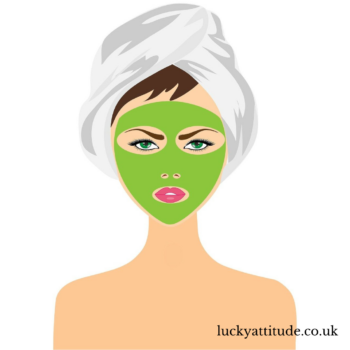LED Light Therapy Mask: Another Beauty Fad Or A Real Deal?

Originally thought to be a pandemic beauty fad, LED light therapy is nothing new and has been around for 100 years.
LED light therapy has long been used for vitamin D deficiency, wound healing, skin conditions like acne, seasonal mood disorders, and insomnia.
It’s not a fad.
LED light therapy devices, including masks, have the potential to give you smoother, clearer skin.
What are LED light therapy masks?
LED (Light Emitting Diode) light therapy masks leverage specific wavelengths of light that penetrate deep into the skin to stimulate cellular activity, reduce inflammation, and stimulate collagen production.
This therapy is effective for various skin conditions, including acne and fine lines.
LED light therapy masks use specific light wavelengths to target various skin issues. These masks typically employ blue and red lights due to their distinct benefits.
Blue light is known for its antibacterial properties, making it effective in treating acne by targeting the bacteria that cause breakouts.
Red light is used for its anti-inflammatory and anti-aging properties. It aids in collagen production, helping to reduce the appearance of fine lines and wrinkles, and can also reduce inflammation, making it beneficial for conditions like rosacea.
Do LED light masks actually work?
The research behind LED masks is centered on the lights used, and if you’re going by those findings, LED masks can be beneficial to your skin.
In a study with 52 female participants, researchers found that red LED light treatment improved measures of eye-area wrinkles.
However, seeing an improvement in certain measures like wrinkles can take some time, and they argue that more long-term research is needed.
When it comes to acne, one review noted that both red and blue light therapy for acne reduced blemishes by 46 to 76 percent after 4 to 12 weeks of treatment.
Some researchers are more skeptical about blue light’s ability to clear skin.
I’d say, if you have the means to try it, you won’t lose anything by giving it a go for yourself. The treatment is safe and non-invasive.
What are LED light therapy masks used for?
There are many uses dermatologists use LED light therapy masks, including:
Acne
LED light therapy is particularly effective against acne-causing bacteria, helping to clear up skin and prevent future breakouts.
Anti-aging and wrinkles
By stimulating collagen production, it significantly reduces the appearance of fine lines and wrinkles, offering a more youthful skin texture.
Enhanced blood flow under the skin’s surface contributes to natural radiance and overall younger-looking skin.
Post-procedure recovery
Useful in the healing process after certain dermatological procedures like microneedling, promoting quicker recovery.
Skin tone improvement
Regular use leads to improved skin tone and texture, making it smoother and more even.
Scar and hyperpigmentation
Effective in reducing the visibility of scars and dark spots, contributing to a more uniform skin tone.
Sun damage repair
Aids in diminishing the signs of sun damage, restoring skin to a healthier state.
Innovation in light therapy for skincare
Innovations in LED technology have led to devices with greater luminosity and precision, enabling more effective targeting of various skin issues.
The integration of Artificial Intelligence (AI) and the Internet of Things (IoT) into these devices has revolutionized how treatments are administered, allowing for personalized and adaptive skincare routines based on real-time skin analysis.
How to use the light therapy masks safely
When it comes to practical tips for using these therapies, including LED masks, it’s essential to understand and follow best practices:
* Adherence to guidelines: Following the manufacturer’s guidelines for duration and frequency is crucial. Most treatments are most effective when used for about 10 to 30 minutes, 2-3 times a week.
* Understand your skin type: Users should consider their skin type and any sensitivities. It’s advisable to start with shorter sessions and gradually increase the duration as the skin adapts.
* Aftercare: post-treatment care is vital. Applying suitable skincare products like moisturisers or sunscreens can enhance the therapy’s benefits.
* Safety first: Ensuring the device’s safety and compliance with health regulations, like FDA approval, is imperative to avoid adverse effects.
